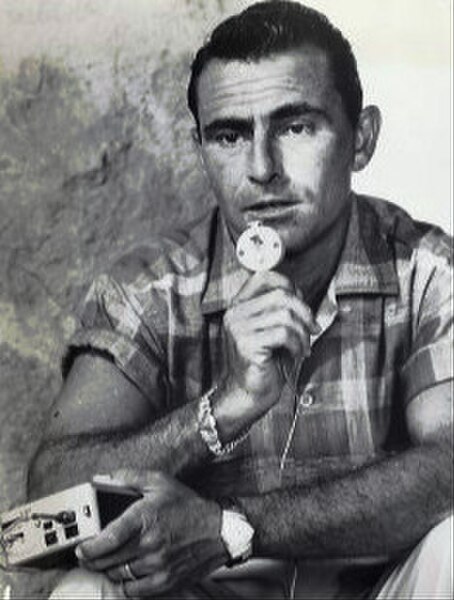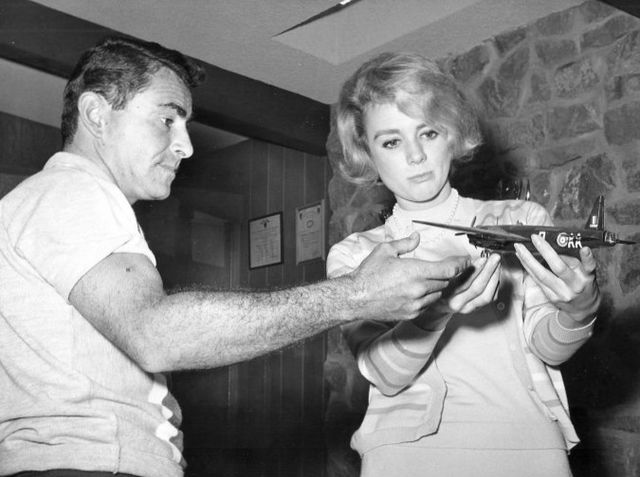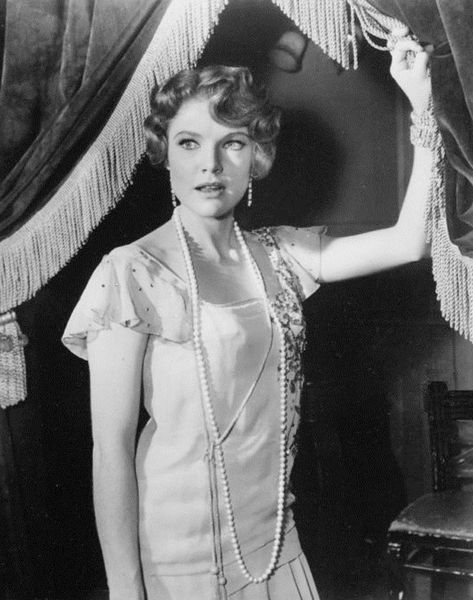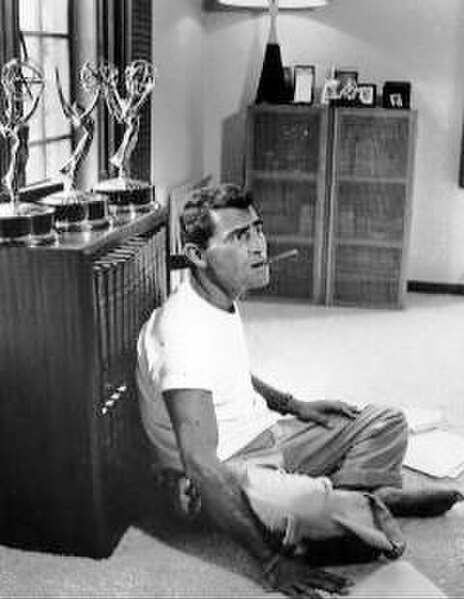"The After Hours" is episode thirty-four of the American television anthology series, The Twilight Zone. It originally aired on June 10, 1960, on CBS.
Publicity photo of (l-r) Anne Francis, James Millhollin and Francis' mannequin double
The Twilight Zone (1959 TV series)
The Twilight Zone is an American fantasy science fiction horror anthology television series created and presented by Rod Serling, which ran for five seasons on CBS from October 2, 1959, to June 19, 1964. Each episode presents a standalone story in which characters find themselves dealing with often disturbing or unusual events, an experience described as entering "the Twilight Zone", often with a surprise ending and a moral. Although often considered predominantly science-fiction, the show's paranormal and Kafkaesque events leaned the show much closer to fantasy and horror. The phrase "twilight zone" has entered the vernacular, used to describe surreal experiences.
Serling working on his script with a dictating machine, 1959
Serling models an airplane with actress Inger Stevens, who appeared in "The Hitch-Hiker" and "The Lateness of the Hour."
Pippa Scott in "The Trouble With Templeton"
Rod Serling at home in 1959





